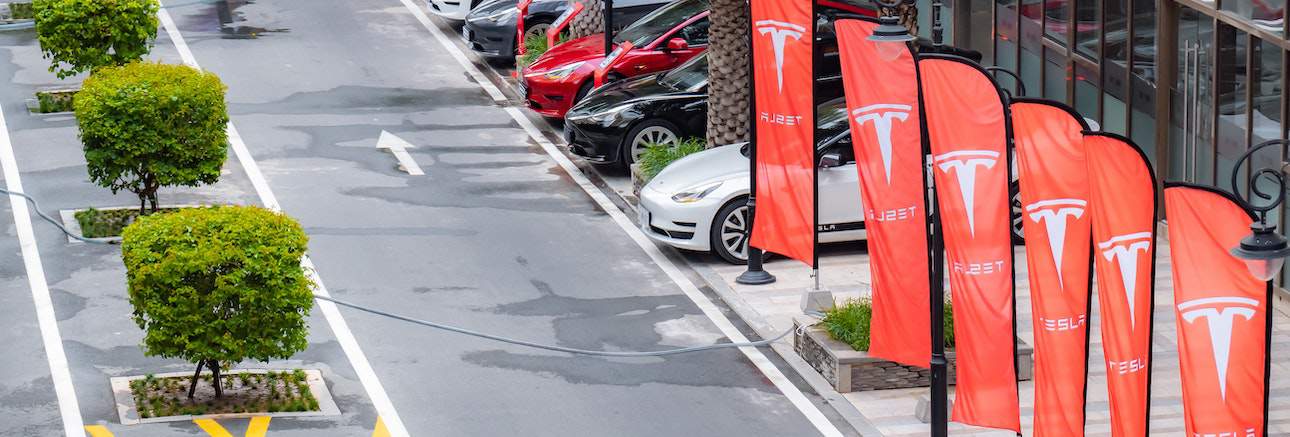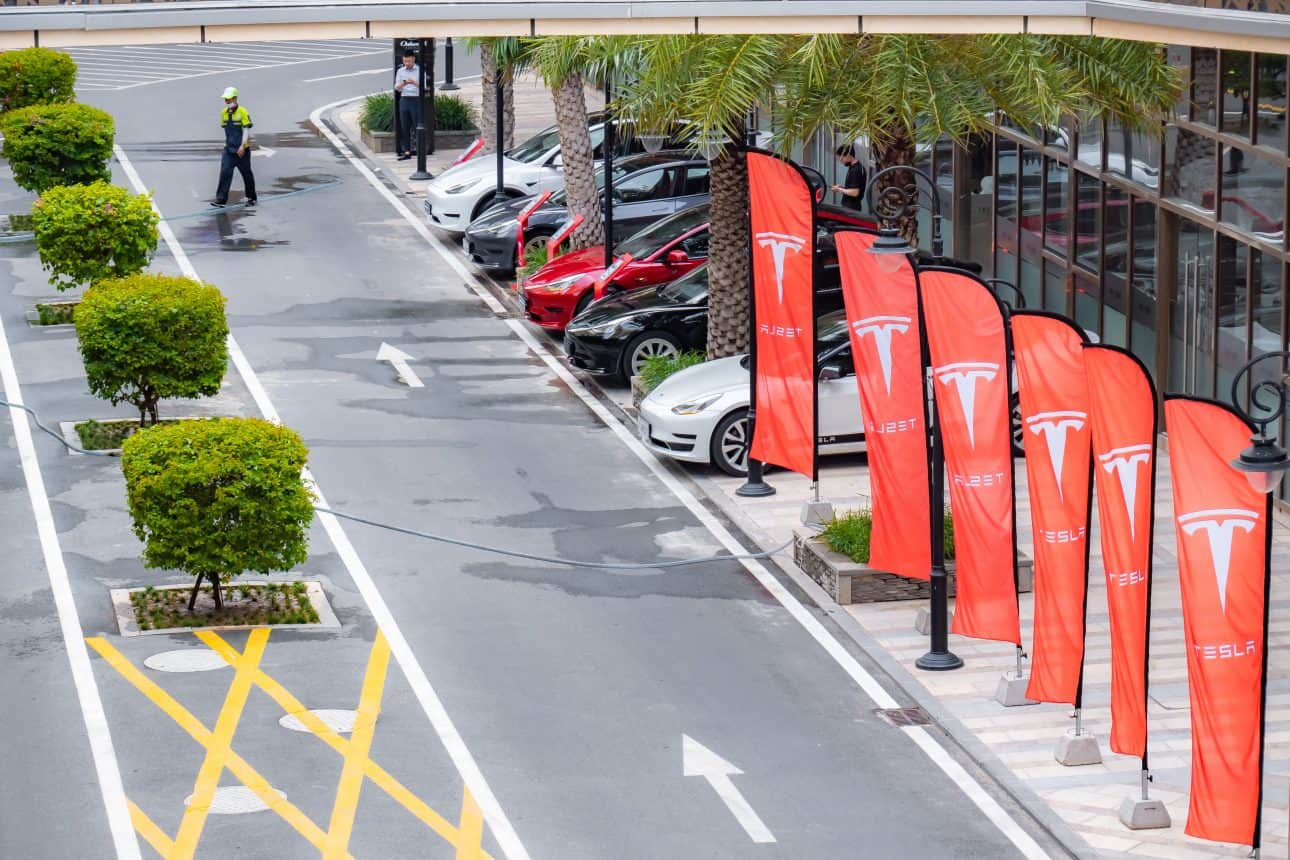Implications: Tesla Announces Next Generation Rare-Earth-Free PMSM
Rare earths: “going to be a little hard to meet that demand”
At Tesla’s 2023 Investor Day on March 1st the company revealed that its next generation PMSM traction motors would not use rare earth permanent magnets.
As stated by Colin Campbell, VP Powertrain Engineering at Tesla, “as the world transitions to clean energy, demand for rare earths is really increasing dramatically and not only is it going to be a little hard to meet that demand but mining that rare earth, it has environmental and health risks”.
Likely a ferrite magnet powered PMSM
While not stated during Investor Day, we expect the most likely candidate replacing NdFeB in Tesla’s next generation motor design is ferrite – it’s a proven concept.
General Motors’ second generation Voltec powertrain used in the 2016 Chevy Volt had a ferrite-driven PMSM alongside an NdFeB-powered PMSM. More recently, Proterial (formerly Hitachi Metals) unveiled its own EV motor designs using ferrite magnets (see December 2022 “EV Motor Materials Monthly”).
To-date, no perfect alternatives to NdFeB
While it’s been demonstrated that a ferrite-powered PMSM can match or exceed the performance of an NdFeB-powered alternative across one or more parameters, this performance comes with a significant weight or efficiency penalty that has historically made the switch unattractive.
For example, in one of Proterial’s new motor designs, it simulated an EV traction motor with ferrite magnets that matched the output and max rotation speed of a comparable PMSM containing NdFeB magnets, but is 30% heavier – a ‘massive’ weight penalty.
In Proterial’s second design, it simulated an EV traction motor with ferrite magnets that matched the output and motor weight of a comparable PMSM containing NdFeB magnets but operates at a 50% higher rotation speed, translating to a material reduction in torque.
In Tesla’s case, the articulated focus when it comes to motors has long been on maximizing the cost-performance balance, which is where NdFeB-powered PMSMs shine, so it is eye-opening to see the new motor concept being justified on the back of anticipated supply scarcity and “environmental and health risks”.
Not all rare earth production is equal when it comes to environmental and health impacts
On account of the Bayan Obo mine in China, along with the nation’s ionic clay mines and those of neighboring Myanmar, the rare earth industry as a whole is often referenced as the paradoxical poster child of electromobility and clean energy – and rightfully so, a decade ago.
Today, there are more supply options than just China/Myanmar and others on the cusp of starting production – options that are transparent, close to home (for Tesla in particular) and substantially less impactful on the environment than the China production of yesteryear.
Up-to-date life cycle impact assessments and comparisons of rare earth production from different sources are sparse, however, what is available suggests that the environmental and health impacts of non-China rare earth production is, or has potential to be, just a fraction of that in China.
For example, a 2018 study by Marx et al. found that the normalized environmental impacts of one kilogram of NdFeB produced from the Mountain Pass mine in the U.S. were around a third that of Bayan Obo.
Similarly, a 2016 study by Schreiber et al. found that production of neodymium and dysprosium (key inputs in NdFeB magnets) from Norra Kärr in Sweden can have just a fraction of the environmental and health impact of that same production from Bayan Obo.
Additionally, there are now more emerging rare earth magnet recyclers than ever before, several starting to produce at scale and with significant commercial traction, including Noveon, Cyclic Materials, REEcycle, Maginito, Innord, Ionic Technologies and others. These producers have potential to supply some of the cleanest rare earths on the planet, environmentally speaking.
Environmental footprint of a motor using ferrite can be worse than NdFeB
Moreover, assuming that Tesla’s new motor concept is indeed based on ferrite, the environmental upsides could be marginal to non-existent.
A 2014 study by Navarro et al. looking at the comparative life cycle assessment of NdFeB and ferrite motors demonstrated that “although the [China-made] NdFeB magnet has a higher environmental impact than the ferrite magnet in terms of a mass-based magnet only comparison, the reduced weight of the magnet combined with the smaller weight of the copper wires and steel in the assembly leads to the NdFeB servomotor having smaller impacts in all categories”.
What makes the above conclusion even more poignant is that, to our understanding, it assumes the NdFeB comes from China’s supply chain, where environmental and health impacts are substantially higher than current and emerging alternatives. Basing the above analysis on current (e.g., MP Materials) or emerging (e.g., Iluka) production would, in our view, further solidify the takeaway.
NdFeB market implications: Expected to be minor
In 2022, Adamas Intelligence data indicates that passenger EV traction motors were responsible for 12% of global NdFeB magnet consumption. Of this 12%, Tesla was responsible for 15% to 20%, making its overall contribution to global NdFeB magnet demand (excluding micromotors, sensors and speakers) just 2% to 3%.
As such, should Tesla’s concept reach creation and commercialization in short order, and should those motors be used across its full vehicle lineup, the global NdFeB market stands to lose a mere 2% to 3% of demand in the near-term, and maximum 3% to 4% over the long-term assuming Tesla maintains its EV market leadership (see Adamas’ “Rare Earth Magnet Market Outlook to 2035” report).
Key takeaways
The media and market’s reaction to the news has been largely overblown, speaking to a broad misunderstanding of the NdFeB market’s supply and demand fundamentals.
Looking forward to 2035, Adamas forecasts that global demand for NdFeB magnets will triple while global production will only double, constrained by long lead times to bring online new rare earth oxide production. In relation to the magnitude of the expected supply gap, a 3% to 4% drop in demand by 2035 would go virtually unnoticed.
Other Relevant Services:
Rare Earth Magnet Market Outlook to 2035
In this report, we provide a detailed overview of the global NdFeB alloy, powder, magnet and magnet rare earth oxide markets, including a breakdown of historical production, consumption and prices from 2015 through 2021. Next, we unravel the anticipated near-term impacts of the pandemic recovery on world markets and forecast global supply, demand and prices from 2022 through 2035.
Rare Earth Pricing Quarterly Outlook
The ‘Rare Earth Pricing Quarterly Outlook’ subscription-based report looks back on the rare earth market’s performance over the trailing three months and details Adamas Intelligence’s latest near-term and long-term rare earth oxide (“REO”) price forecasts to 2035.
Rare Earth Minerals Monthly
The ‘Rare Earth Minerals Monthly’ is a subscription-based report and data service for tracking global rare earth minerals trade, mineral concentrate prices, rare earth oxide prices, concentrate payability ratios, processor economics and other key developments on the supply- and demand-side of the market month-after-month.
EV Motor Materials Monthly
The ‘EV Motor Materials Monthly’ is a subscription-based report and data service for tracking motor demand, NdFeB magnet demand, and other key developments in the global EV traction motor market month-after-month, as they happen; by region, country, motor type, EV type, EV make, EV model and motor supplier, plus the latest developments in rare earth and NdFeB alloy prices.
EV Motor Power and Motor Materials Tracker
Building on ongoing EV registrations in over 100 countries, our web-based platform helps users track monthly deployment of motor metals and materials, motor units, motor power, and the ever-evolving competitive landscapes of motor types and motor suppliers.
Back to overview


